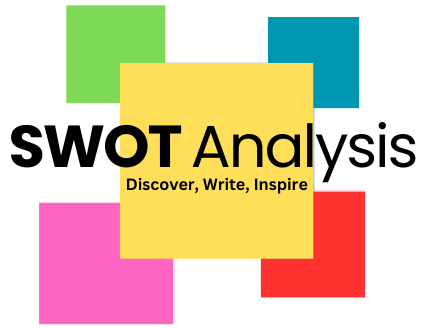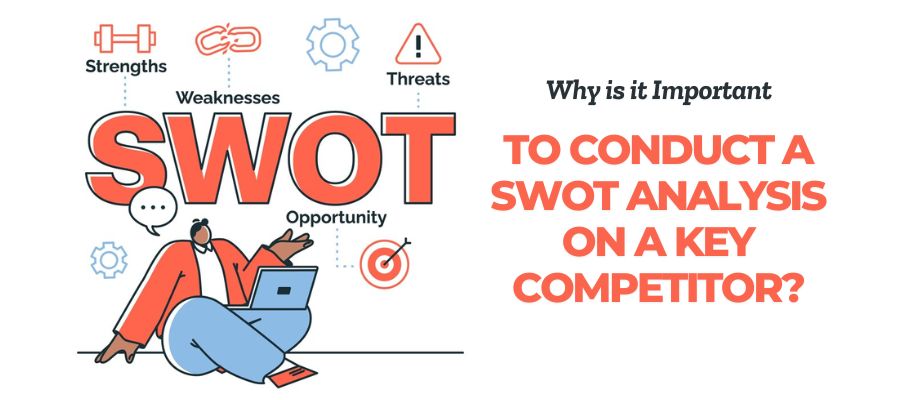SWOT analysis is a helpful tool that businesses use to understand their situation better. The term SWOT stands for Strengths, Weaknesses, Opportunities, and Threats. By looking at these four areas, companies can make smart decisions and plan for the future. This article will explain what each part of SWOT means and how it can be used effectively in different industries.
Understanding the Basics of SWOT Analysis
SWOT analysis is a method used to evaluate a business’s strengths, weaknesses, opportunities, and threats. This technique helps organizations understand their position in the market. By looking at both internal factors (like strengths and weaknesses) and external factors (like opportunities and threats), businesses can make better decisions.
Historical Background of SWOT
The concept of SWOT analysis was developed in the 1960s by Albert Humphrey at the Stanford Research Institute. It was initially used to help businesses understand why their planning often failed. Over time, this method has been adopted by various organizations, including nonprofits and government agencies, for strategic planning.
Importance of SWOT in Business
SWOT analysis is crucial for several reasons:
- It helps identify areas where a business can improve.
- It uncovers opportunities that a business can take advantage of.
- It highlights potential threats that could harm the business.
SWOT analysis is a powerful tool that can guide businesses toward success by providing a clear picture of their current situation and future possibilities.
What Does SWOT Stand for in the Term SWOT Analysis?
SWOT analysis is made up of four key parts: Strengths, Weaknesses, Opportunities, and Threats. Each of these components plays a crucial role in understanding a business’s position and potential.
Strengths: Internal Advantages
Strengths are the positive attributes of a business that give it an edge over competitors. These can include:
- Strong brand reputation
- Loyal customer base
- Unique technology or products
Identifying strengths helps a company understand what it does well and how it can leverage these advantages.
Weaknesses: Internal Challenges
Weaknesses are areas where a business may struggle or lack resources. Common weaknesses include:
- Poor brand recognition
- High employee turnover
- Limited financial resources
Recognizing weaknesses is essential for improvement and staying competitive.
Opportunities: External Prospects
Opportunities are favorable external factors that a business can exploit to its advantage. Examples include:
- Emerging markets
- Changes in regulations that benefit the business
- Technological advancements
These opportunities can lead to growth and increased market share if acted upon effectively.
Threats: External Risks
Threats are external challenges that could harm a business. They may include:
- Increased competition
- Economic downturns
- Changes in consumer preferences
Understanding threats allows a business to prepare and develop strategies to mitigate risks.
A SWOT analysis is a powerful tool that helps businesses identify their strengths and weaknesses while also recognizing opportunities and threats in the market. This balanced view is essential for strategic planning.
The Strategic Importance of SWOT Analysis
SWOT as a Decision-Making Tool
SWOT analysis is a powerful tool that helps businesses make informed decisions. By identifying strengths, weaknesses, opportunities, and threats, organizations can create effective strategies. This process allows teams to focus on what they do best while addressing areas that need improvement.
Identifying Market Niches with SWOT
Using SWOT analysis can help businesses find unique market opportunities. Here are some ways it can assist:
- Spotting gaps in the market that competitors may overlook.
- Understanding customer needs that align with the company’s strengths.
- Evaluating external trends that could lead to new business avenues.
Enhancing Competitive Advantage
A well-executed SWOT analysis can significantly boost a company’s competitive edge. It allows businesses to:
- Leverage their strengths to outperform competitors.
- Mitigate weaknesses that could hinder success.
- Capitalize on opportunities for growth.
- Prepare for potential threats that could impact the business.
Conducting a SWOT analysis regularly helps businesses stay relevant and adapt to changing environments. It’s not just a one-time task but a continuous process that supports long-term success.
Applications of SWOT Analysis Across Industries
SWOT analysis is a versatile tool that can be used in various fields. It helps organizations identify their strengths, weaknesses, opportunities, and threats, leading to better decision-making. Here are some key applications:
Business and Corporate Strategy
- Strategic Planning: Companies use SWOT to outline their goals and strategies.
- Market Analysis: Helps in understanding market dynamics and competition.
- Resource Allocation: Assists in deciding where to invest resources for maximum impact.
Nonprofit and Government Use
- Program Evaluation: Nonprofits can assess the effectiveness of their programs.
- Policy Development: Governments can identify community needs and threats.
- Funding Opportunities: Helps in finding potential funding sources by highlighting strengths.
Personal and Career Development
- Self-Assessment: Individuals can evaluate their skills and areas for improvement.
- Career Planning: Helps in identifying job opportunities that align with personal strengths.
- Networking: Recognizes potential connections that can aid in career growth.
SWOT analysis is not just for businesses; it can also guide personal growth and development.
Conducting an Effective SWOT Analysis
Steps to Create a SWOT Matrix
Creating a SWOT analysis involves several key steps:
- Define Your Objective: Start by identifying the specific goal of your analysis. This helps focus your efforts.
- Gather Information: Collect data about your organization, market trends, and competitors. This will provide a solid foundation for your analysis.
- List Strengths and Weaknesses: Identify internal factors that give you an advantage or pose challenges.
- Identify Opportunities and Threats: Look at external factors that could benefit or harm your organization.
- Compile and Analyze: Organize your findings into a SWOT matrix for easy comparison.
Involving Cross-Functional Teams
To make your SWOT analysis more effective, involve people from different areas of your organization. This can include:
- Marketing team members who understand customer needs.
- Financial staff who can provide insights on resources.
- Operations personnel who know about internal processes.
- Leadership to ensure alignment with strategic goals.
Utilizing SWOT for Strategic Planning
Once you have your SWOT analysis, use it to inform your strategic planning. Here’s how:
- Develop Strategies: Use strengths to take advantage of opportunities and counter threats.
- Set Goals: Align your goals with the insights gained from the SWOT analysis.
- Monitor Progress: Regularly review your SWOT analysis to adapt to changing circumstances.
Conducting a SWOT analysis is not just about identifying factors; it’s about using that information to make informed decisions and drive your organization forward.
Limitations and Challenges of SWOT Analysis
Potential Biases in SWOT
One major issue with SWOT analysis is that it can be influenced by personal opinions. When people assess strengths and weaknesses, they might not be completely honest. This can lead to an overly positive view of a company’s situation, ignoring real problems that need attention.
Overcoming SWOT Limitations
To make SWOT analysis more effective, consider these steps:
- Involve a diverse group of people: Get input from different levels of the organization to gather various perspectives.
- Be honest and objective: Encourage team members to share their true thoughts, even if they are critical.
- Prioritize the factors: Not all strengths and weaknesses are equally important. Focus on the most impactful ones.
Integrating SWOT with Other Tools
Using SWOT alone may not be enough. It can be helpful to combine it with other analysis tools, such as:
- PEST Analysis: This looks at external factors like political and economic influences.
- Porter’s Five Forces: This helps understand the competitive environment.
- Balanced Scorecard: This focuses on measuring performance across different areas.
In summary, while SWOT analysis is a useful tool, it has its limitations. By being aware of these challenges and taking steps to address them, organizations can make better use of this analysis.
Real-World Examples of SWOT Analysis
Case Study: A Retail Business
In a retail setting, a SWOT analysis can reveal important insights. Here’s a simplified example:
| Strengths | Weaknesses |
|---|---|
| Strong brand recognition | High employee turnover |
| Prime location | Limited online presence |
| Diverse product range | Seasonal sales fluctuations |
Opportunities and Threats:
- Opportunities:
- Expanding online sales
- Collaborating with local businesses
- Launching loyalty programs
- Threats:
- Increasing competition
- Economic downturns
- Changing consumer preferences
Case Study: A Technology Firm
For a technology company, the SWOT analysis might look like this:
| Strengths | Weaknesses |
|---|---|
| Innovative product design | High research costs |
| Skilled workforce | Limited market share |
| Strong customer support | Dependence on a few clients |
Opportunities and Threats:
- Opportunities:
- Growing demand for tech solutions
- Potential for international expansion
- Partnerships with other tech firms
- Threats:
- Rapid technological changes
- Cybersecurity risks
- Regulatory challenges
Insights from SWOT in Action
A SWOT analysis helps businesses understand their position in the market. Here are some key takeaways:
- Identify strengths to leverage in marketing.
- Recognize weaknesses to improve operations.
- Spot opportunities for growth and innovation.
- Anticipate threats to develop risk management strategies.
Conducting a SWOT analysis is not just about listing items; it’s about understanding how these elements interact and influence each other. This understanding can lead to better strategic decisions.
Also Read: Which Statement Best Describes Strengths in a SWOT Analysis
Conclusion
In summary, a SWOT analysis is a helpful tool for businesses and individuals alike. It helps you look at your strengths, weaknesses, opportunities, and threats. By understanding these four areas, you can make better decisions and plan for the future. Whether you are starting a new project or trying to improve an existing one, using a SWOT analysis can guide you in the right direction. It’s a simple way to see where you stand and what you need to work on to succeed.
Frequently Asked Questions
What does SWOT stand for?
SWOT stands for Strengths, Weaknesses, Opportunities, and Threats.
Why is SWOT analysis important for businesses?
SWOT analysis helps businesses understand their strengths and weaknesses, as well as external opportunities and threats, aiding in better decision-making.
How do you conduct a SWOT analysis?
To conduct a SWOT analysis, list your strengths and weaknesses, then identify opportunities and threats in your market.
Can individuals use SWOT analysis?
Yes, individuals can use SWOT analysis for personal development or career planning.
What are some common mistakes in SWOT analysis?
Common mistakes include not being honest about weaknesses or not considering all relevant external factors.
How often should a SWOT analysis be done?
A SWOT analysis should be done regularly, especially when there are significant changes in the business environment.





